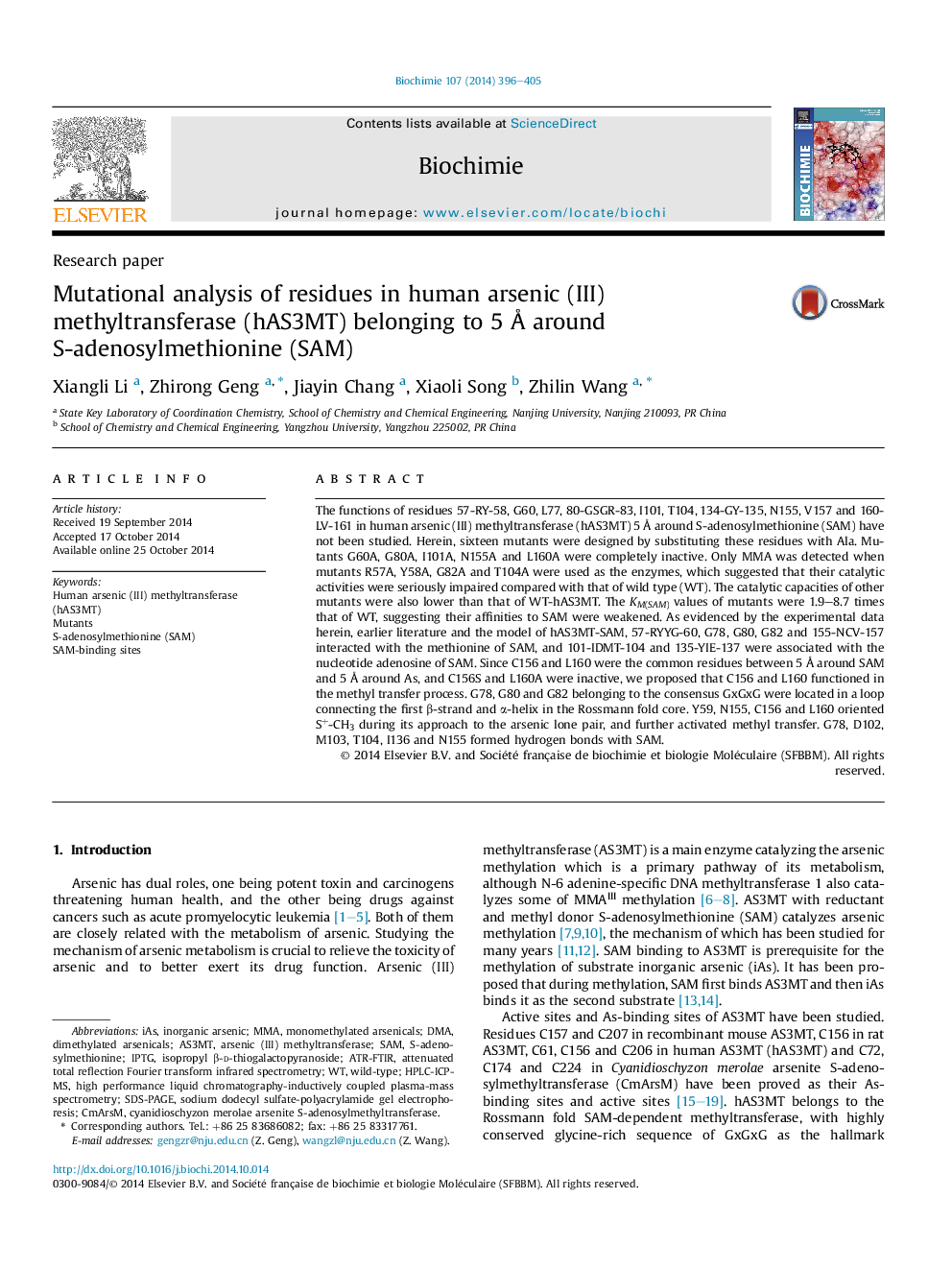| Article ID | Journal | Published Year | Pages | File Type |
|---|---|---|---|---|
| 10803626 | Biochimie | 2014 | 10 Pages |
Abstract
The functions of residues 57-RY-58, G60, L77, 80-GSGR-83, I101, T104, 134-GY-135, N155, V157 and 160-LV-161 in human arsenic (III) methyltransferase (hAS3MT) 5Â Ã
around S-adenosylmethionine (SAM) have not been studied. Herein, sixteen mutants were designed by substituting these residues with Ala. Mutants G60A, G80A, I101A, N155A and L160A were completely inactive. Only MMA was detected when mutants R57A, Y58A, G82A and T104A were used as the enzymes, which suggested that their catalytic activities were seriously impaired compared with that of wild type (WT). The catalytic capacities of other mutants were also lower than that of WT-hAS3MT. The KM(SAM) values of mutants were 1.9-8.7 times that of WT, suggesting their affinities to SAM were weakened. As evidenced by the experimental data herein, earlier literature and the model of hAS3MT-SAM, 57-RYYG-60, G78, G80, G82 and 155-NCV-157 interacted with the methionine of SAM, and 101-IDMT-104 and 135-YIE-137 were associated with the nucleotide adenosine of SAM. Since C156 and L160 were the common residues between 5Â Ã
around SAM and 5Â Ã
around As, and C156S and L160A were inactive, we proposed that C156 and L160 functioned in the methyl transfer process. G78, G80 and G82 belonging to the consensus GxGxG were located in a loop connecting the first β-strand and α-helix in the Rossmann fold core. Y59, N155, C156 and L160 oriented S+-CH3 during its approach to the arsenic lone pair, and further activated methyl transfer. G78, D102, M103, T104, I136 and N155 formed hydrogen bonds with SAM.
Keywords
HPLC-ICP-MSHigh performance liquid chromatography-inductively coupled plasma-mass spectrometryS-adenosylmethionine (SAM)AS3MTMMAiAsSAMIPTGATR-FTIRDMAInorganic arsenicS-adenosylmethioninesodium dodecyl sulfate-polyacrylamide gel electrophoresisSDS-PAGEisopropyl β-D-thiogalactopyranosideMutantswild-type
Related Topics
Life Sciences
Biochemistry, Genetics and Molecular Biology
Biochemistry
Authors
Xiangli Li, Zhirong Geng, Jiayin Chang, Xiaoli Song, Zhilin Wang,
